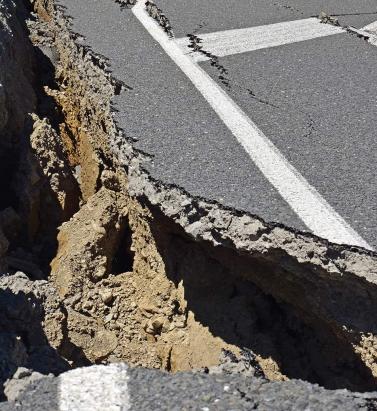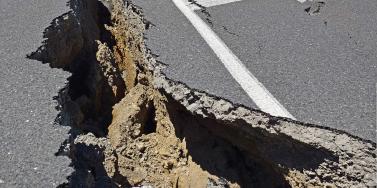Author: NIGEL ALLEN


A Need for Multi-Gap Analysis
September 06, 2019The insurance protection gap is composed of emerging markets and high-risk and intangible exposures There cannot be many industries that recognize that approximately 70 percent of market potential is untapped. Yet that is the scale of opportunity in the expanding “protection gap”. Power outage in lower Manhattan, New York, after Hurricane Sandy While efforts are ongoing to plug the colossal shortage, any meaningful industry foray into this barren range must acknowledge that the gap is actually multiple gaps, believes Robert Muir-Wood, chief research officer at RMS. “It is composed of three distinct insurance gaps — high risk, emerging markets and intangibles — each with separate causes and distinct solutions. Treating it as one single challenge means we will never achieve the loss clarity to tackle the multiple underlying issues.” High-risk, high-value gaps exist in regions where potential loss magnitude outweighs the ability of the industry to refund post-catastrophe. High deductibles and exclusions reduce coverage appeal and stunt market growth. “Take California earthquake. The California Earthquake Authority (CEA) was launched in 1996 to tackle the coverage dilemma exposed by the Northridge disaster. Yet increased deductibles and new exclusions led to a 30 percent gap expansion. And while recent changes have seen purchase uptick, penetration is around 12-14 percent for California homeowners.” On the emerging market front, micro- and meso-insurance and sovereign risk transfer efforts to bridge the gap have achieved limited success. “The shortfall in emerging economies remains static at between 80 to 100 percent,” he states, “and it is not just a developing world issue, it’s clearly evident in mature markets like Italy.” “The protection gap is composed of three distinct insurance gaps — high risk, emerging markets and intangibles — each with separate causes and distinct solutions” Robert Muir-Wood RMS A further fast-expanding gap is intangible assets. “In 1975, physical assets accounted for 83 percent of the value of S&P 500 companies,” Muir-Wood points out. “By 2015, that figure was 16 percent, with 84 percent composed of intangible assets such as IP, client data, brand value and innovation potential.” While non-damage business interruption cover is evolving, expanding client demand for events such as power outage, cloud disruption and cyberbreach greatly outpace delivery. To start closing these gaps, Muir-Wood believes protection gap analytics are essential. “We have to first establish a consistent measurement for the difference between insured and total loss and split out ‘penetration’ and ‘coverage’ gaps. That gives us our baseline from which to set appropriate targets and monitor progress. “Probabilistic cat risk models will play a central role, particularly for the high-risk protection gap, where multiple region and peril-specific models already exist. However, for intangibles and emerging markets, where such models have yet to gain a strong foothold, focusing on scenario events might prove a more effective approach.” Variations in the gaps according to severity and geography of the catastrophe could be expressed in the form of an exceedance probability curve, showing how the percentage of uninsured risk varies by return period. “There should be standardization in measuring and reporting the gap,” he concludes. “This should include analyzing insured and economic loss based on probabilistic models, separating the effects of the penetration and coverage gaps, and identifying how gaps vary with annual probability and location.”


A Climate Model Challenge
September 06, 2019Insurance-linked securities (ILS) investors want to know more about how climate change impacts investment decisions, according to Paul Wilson, head of non-life analytics at Securis Investment Partners, an ILS asset manager We make investments that are typically annual to two-to-three years in duration, so we need to understand the implications of climate change on those timescales,” explains Paul Wilson, head of non-life analytics at Securis Investment Partners. “We reevaluate investments as part of any renewal process, and it’s right to ask if any opportunity is still attractive given what we know about how our climate is changing. “The fundamental question that we’re trying to address is, ‘Have I priced the risk of this investment correctly for the next year?’” he continues. “And therefore, we need to know if the catastrophe models we are using accurately account for the impact climate change may be having. Or are they overly reliant on historical data and, as such, are not actually representing the true current risk levels for today’s climate?” Expertise in climate change is a requirement for how Securis is thinking about risk. “We have investors who are asking questions about climate change, and we have a responsibility to be able to demonstrate to them that we are taking the implications into consideration in our investment decisions.” “We have investors who are asking questions about climate change, and we have a responsibility to demonstrate to them that we are taking the implications into consideration in our investment decisions Paul Wilson Securis Investment Partners The rate at which a changing climate may influence natural catastrophes will present both a challenge and opportunity to the wider industry as well as to catastrophe modeling companies, thinks Wilson. The results coming out of climate change attribution studies are going to have to start informing the decisions around risk. For example, according to attribution studies, climate change tripled the chances of Hurricane Harvey’s record rainfall. “Climate change is a big challenge for the catastrophe modeling community,” he says. “It’s going to put a greater burden on catastrophe modelers to ensure that their models are up to date. The frequency and nature of model updates will have to change. Models we are using today may become out of date in just a few years’ time. That’s interesting when you think about the number of perils and regions where climate change could have a significant impact. “All of those climate-related models could be impacted by climate change, so we have to question the impact that is having today,” he adds. “If the model you are using to price the risk has been calibrated to the last 50 years, but you believe the last 10 or last 20 years are more representative because of the implication of climate change, then how do you adjust your model according to that? That’s the question we should all be looking to address.”


ILS: A Responsible Investment Approach
September 06, 2019As environmental, social and governance principles become more prominent in guiding investment strategies, the ILS market must respond In recent years, there has been a sharper focus by the investment community on responsible investment. One indicator of this has been the increased adoption of the Principles for Responsible Investment (PRI), as environmental, social and governance (ESG) concerns become a more prominent influencer of investment strategies. Investment houses are also seeking closer alignment between their ESG practices and the United Nations’ Sustainable Development Goals (SDGs). The 17 interconnected SDGs, set in 2015, are a call to action to end poverty, achieve peace and prosperity for all, and create a sustainable society by 2030. As investors target more demonstrable outcomes from their investment practices, is there a possible opportunity for the insurance-linked securities (ILS) market to grow, given the potential societal capital that insurance can generate? “Insurance certainly has all of the hallmarks of an ESG-compatible investment opportunity,” believes Charlotte Acton, director of capital and resilience solutions at RMS. “It has the potential to promote resilience through enabling broader access and uptake of appropriate affordable financial protection and reducing the protection gap; supporting faster and more efficient responses to disasters; and incentivizing mitigation and resilient building practices pre- and post-event.” RMS has been collaborating on numerous initiatives designed to further the role of insurance and insurance technologies in disaster and climate-change resilience. These include exploring ways to monetize the dividends of resilience to incentivize resilient building, using catastrophe models to quantify the benefits of resilience investments such as flood defenses, and earthquake retrofit programs for housing. The work has also involved designing innovative parametric structures to provide rapid post-disaster liquidity. “Investors will want a clear understanding of the exposure or assets that are being protected and whether they are ESG-friendly” Charlotte Acton RMS “ILS offers a clear route for investors to engage with insurance,” explains Acton, “broadening the capital pool that supports insurance is critical as it facilitates the expansion of insurance to new regions and allows the industry to absorb increasingly large losses from growing threats such as climate change.” Viewed as a force for social good, it can certainly be argued that insurance-linked securities supports a number of the U.N.’s SDGs, including reducing the human impact of disasters and creating more sustainable cities, increasing overall resilience levels and increasing access to financial services that enhance sustainable growth potential. While there is opportunity for ILS to play a large part in ESG, the specific role of ILS within PRI is still being determined. According to LGT Capital Partners ESG Report 2019, managers in the ILS space have, in general, yet to start “actively integrating ESG into their investment strategies,” adding that across the ILS asset class “there is still little agreement on how ESG considerations should be applied. However, there is movement in this area. For example, the Bermuda Stock Exchange, a primary exchange for ILS issuers, recently launched an ESG initiative in line with the World Federation of Exchanges’ Sustainability Principles, stating that ESG was a priority in 2019 “with the aim to empower sustainable and responsible growth for its member companies, listings and the wider community.” For ILS to become a key investment option for ESG-focused investors, it must be able to demonstrate its sustainability credentials clearly. “Investors will want a clear understanding of the exposure or assets that are being protected,” Acton explains, “and whether they are ESG-friendly. They will want to know whether the protection offered provides significant societal benefits. If the ILS market can factor ESG considerations into its approach more effectively, then there is no reason why it should not attract greater attention from responsible investors.”


What a Difference
September 06, 2019As the insurance industry’s Dive In Festival continues to gather momentum, EXPOSURE examines the factors influencing the speed at which the diversity and inclusion dial is moving September 2019 marks the fifth Dive In Festival, a global movement in the insurance sector to support the development of inclusive workplace cultures. An industry phenomenon, it has ballooned in size from a London-only initiative in 2015 attracting 1,700 people to an international spectacle spanning 27 countries and reaching over 9,000 people in 2018. That the event should gather such momentum clearly demonstrates a market that is moving forward. There is now an industrywide acknowledgement of the need to better reflect the diversity of the customer base within the industry’s professional ranks. The Starting Point As Pauline Miller, head of talent development and inclusion (D&I) at Lloyd’s, explains, the insurance industry is a market that has, in the past, been slow to change its practitioner profile. “If you look at Lloyd’s, for example, for nearly three hundred years it was a men-only environment, with women only admitted as members in December 1969. “It’s about bringing together the most creative group of people that represent different ways of thinking that have evolved out of the multiple factors that make them different” Pauline Miller Lloyd’s “You also have to recognize that the insurance industry is not as far along the diversity and inclusion journey compared to other sectors,” she continues. “I previously worked in the banking industry, and diversity and inclusion had been an agenda issue in the organization for a number of years. So, we must acknowledge that this is a journey that will require multiple more steps before we really begin breaking down barriers.” However, she is confident the insurance industry can quickly make up ground. “By its very nature, the insurance market lends itself to the spread of the D&I initiative,” Miller believes. “We are a relationship-based business that thrives on direct contact, and our day-to-day activities are based upon collaboration. We must leverage this to help speed up the creation of a more diverse and inclusive environment.” The positive effects of collaboration are already evident in how this is evolving. Initiatives like Dive In, a weeklong focus on diversity and inclusion, within other financial sectors have tended to be confined to individual organizations, with few generating the level of industrywide engagement witnessed within the insurance sector. However, as Danny Fisher, global HR business partner and EMEA HR manager at RMS, points out, for the drive to gain real traction there must be marketwide consensus on the direction it is moving in. “There is always a risk,” he says, “that any complex initiative that begins with such positive intent can become derailed if there is not an understanding of a common vision from the start, and the benefits it will deliver. “There also needs to be better understanding and acknowledgement of the multitude of factors that may have contributed to the uniformity we see across the insurance sector. We have to establish why this has happened and address the flaws in our industry contributing to it.” It can be argued that the insurance industry is still composed of a relatively homogeneous group of people. In terms of gender disparity, ethnic diversity, and people of different sexual orientations, from different cultural or social backgrounds, or with physical or mental impairments, the industry recognizes a need to improve. Diversity is the range of human differences, including but not limited to race, ethnicity, gender, gender identity, sexual orientation, age, social class, physical ability or attributes, religious or ethical values system, national origin, and political beliefs. “As a market,” Miller agrees, “there is a tendency to hire people similar to the person who is recruiting. Whether that’s someone of the same gender, ethnicity, sexual orientation or from the same university or social background.” “You can end up with a very uniform workforce,” adds Fisher, “where people look the same and have a similar view of the world, which can foster ‘groupthink’ and is prone to bias and questionable conclusions. People approach problems and solutions in the same way, with no one looking at an alternative — an alternative that is often greatly needed. So, a key part of the diversity push is the need to generate greater diversity of thought.” The challenge is also introducing that talent in an inclusive way that promotes the effective development of new solutions to existing and future problems. That broad palette of talent can only be created by attracting and retaining the best and brightest from across the social spectrum within a framework in which that blend of skills, perspectives and opinions can thrive. “Diversity is not simply about the number of women, ethnicities, people with disabilities or people from disadvantaged backgrounds that you hire,” believes Miller. “It’s about bringing together the most creative group of people that represent different ways of thinking that have evolved out of the multiple factors that make them different.” Moving the Dial There is clearly a desire to make this happen and strong evidence that the industry is moving together. Top-level support for D&I initiatives coupled with the rapid growth of industrywide networks representing different demographics are helping firm up the foundations of a more diverse and inclusive marketplace. But what other developments are needed to move the dial further? “We have to recognize that there is no ‘one-size-fits-all’ to this challenge,” says Miller. “Policies and strategies must be designed to create an environment in which diversity and inclusion can thrive, but fundamentally they must reflect the unique dynamics of your own organization. “We also must ensure we are promoting the benefits of a career in insurance in a more powerful and enticing way and to a broader audience,” she adds. “We operate in a fantastic industry, but we don’t sell it enough. And when we do get that diversity of talent through the door, we have to offer a workplace that sticks, so they don’t simply walk straight back out again. “For example, someone from a disadvantaged community coming through an intern program may never have worked in an office environment before, and when they look around are they going to see people like themselves that they can relate to? What role models can they connect with? Are we prepared for that?” For Fisher, steps can also be taken to change processes and modernize thinking and habits. “We have to be training managers in interview and evaluation techniques and discipline to keep unconscious bias in check. There has to be consistency with meaningful tests to ensure data-driven hiring decisions. “At RMS, we are fortunate to attract talent from around the world and are able to facilitate bringing them on board to add further variety in solving for complex problems. A successful approach for us, for example, has been accessing talent early, often prior to their professional career.” There is, of course, the risk that the push for greater diversity leads to a quota-based approach. “Nobody wants this to become a tick-box exercise,” believes Miller, “and equally nobody wants to be hired simply because they represent a particular demographic. But if we are expecting change, we do need measurements in place to show how we are moving the dial forward. That may mean introducing realistic targets within realistic timeframes that are monitored carefully to ensure we are on track. “Ultimately,” she concludes, “what we are all working to do is to create the best environment for the broadest spectrum of people to come into what is a truly amazing marketplace. And when they do, offering a workplace that enables them to thrive and enjoy very successful careers that contribute to the advancement of our industry. That’s what we all have to be working toward.”


The Value of Defense
September 06, 2019Current flood defenses in the U.K. reduce annual losses from river flooding by £1.1 billion, according to research by RMS Flooding is one of the most significant natural hazards for the U.K. with over five million homes and businesses in England at risk of flooding and coastal erosion, according to the Environment Agency. Flood barrier in Shropshire, England In 2015, the U.K. government announced a six-year, £2.3 billion investment in flood defenses. But the Environment Agency proposes a further annual investment of £1 billion through 2065 to keep pace with the flood-related impacts of climate change and shifts in exposure levels. Critical to targeted flood mitigation investment is understanding the positive impacts of current defenses. In June 2019, Flood Re* released its Investing in Flood Risk Management and Defenses study, conducted by RMS. Addressing the financial benefits of existing flood defenses for the first time, data from the RMS® Europe Inland Flood HD Model demonstrated that current infrastructure reduced annual losses from riverine flooding by £1.1 billion. This was based on ground-up losses, using the RMS U.K. Economic Exposure Database covering buildings and contents for residential, commercial, industrial and agricultural, plus business interruption losses. Critical to targeted flood investment is understanding the positive impacts of current defenses “Our flood model incorporates countrywide defense data sourced from the Environment Agency and the Scottish Flood Defence Asset Database,” says Theresa Lederer, a consultant within the RMS capital and resilience solutions team, “including walls, levees and embankments, carefully reviewed and augmented by RMS experts. Our initial model run was with defenses in place, and then, using the in-built model functionality to enter user-defined defense values, we removed these [defenses in place].” The differences in average annual loss results between the two analyses was £1.1 billion, with losses increasing from £0.7 billion under current defenses to £1.8 billion in the undefended case. The analysis also revealed a differentiated picture of flood risk and defenses at the regional and local levels. “The savings relative to total inland flood risk are more pronounced in Northern Ireland and England (both over a 50 percent reduction in average annual losses) than Scotland and Wales,” she explains. “But when you view the savings relative to surface-water flood risk only, these are similarly significant across the country, with loss reductions exceeding 75 percent in all regions. This reflects the fact that pluvial flooding, which is kept constant in the analysis, is a bigger loss driver in Scotland and Wales, compared to the rest of the U.K.” Other insights included that the more deprived half of the population — based on the U.K. Townsend Deprivation Index — benefited from 70 percent of the loss reduction. The study also showed that while absolute savings were highest for catastrophic events, the proportion of the savings compared to the overall level of loss caused by such events was less significant. “In the case of 1-in-5-year events,” Lederer says, “river flood defenses prevent approximately 70 percent of inland flood losses. For 1-in-500-year events this drops to 30 percent; however, the absolute value of those 30 percent is far higher than the absolute savings realized in a 1-in-5-year event. “Should the focus of defenses therefore be on providing protection from major flood events, with potential catastrophic impacts even though return on investment might not be as attractive given their infrequency? Or on attritional losses from more frequent events, which might realize savings more frequently but fail to protect from the most severe events? Finding a balanced, data-driven approach to flood defense investment is crucial to ensure the affordability of sustainable flood resilience.”


The Power of a Crisis
September 06, 2019As Christchurch City Council continues to build back better, will its resilience investment pay dividends when it comes to citywide insurance cover? The Canterbury Earthquake Sequence is the largest insured event in New Zealand’s history. Between September 2010 and December 2011, four major earthquakes caused damage to approximately 168,000 residential buildings. The earthquakes spawned more than 770,000 claims for the country’s Earthquake Commission (EQC) alone, resulting in a payout of around NZ$10 billion (US$6.4 billion). The private sector absorbed almost twice that, with the Insurance Council of New Zealand putting the figure at NZ$21.4 billion (as of March 31, 2019). Christchurch Art Gallery. The city’s art gallery, for example, has been retrofitted to resist even the most severe earthquake activity. Nine years on from the initial tremors, there remain over 1,200 open property claims in the private market, while the outstanding figure for the EQC stood at some 2,600 claims in February 2018. “Dealing with the property claims was extremely challenging,” explains Raf Manji, chair of the Christchurch City Council’s Finance Committee, “not just in terms of contractual issues, but because the insurance was based on building-by-building cover. And when you’re dealing with damage to so many buildings, it is going to take a very long time to agree what that damage is.” Building Back Better The need to rebuild Christchurch presented the city with an opportunity. “As American politician Rahm Emanuel once said, ‘Never let a crisis go to waste,’” says Lianne Dalziel, mayor of Christchurch. “The earthquakes provided a major opportunity to build back better and ensure we embed resilience into every aspect, from below ground up.” That commitment means that new construction, whether of above-ground assets or horizontal infrastructure, is being carried out to a level much higher than building codes dictate. “With the information, we want more informed conversations with both traditional and alternative markets about how we transfer risk more effectively” Raf Manji Christchurch City Council “We’re building to an exceptionally high standard,” states Mike Gillooly, chief resilience officer for the city. This is a relatively new public position created following Christchurch’s inclusion in the first wave of the Rockefeller Foundation’s 100 Resilient Cities program. “The city’s art gallery, for example, has been retrofitted to resist even the most severe earthquake activity,” Gillooly continues. But this dedication to resilience goes beyond the immediate rebuild. The council is also making resilience a core component of its long-term strategic planning. The city’s 2021-2051 infrastructure strategy, which covers the council’s investments in water supply, wastewater, stormwater, transport, parks, facilities, solid waste and communication technology for the next 30 years, will have resilience as its overarching theme. “This is the first time we are proactively building risk and resilience into our long-term planning framework,” states Dalziel. “We are developing a much deeper appreciation of risk and have spent considerable time understanding our infrastructure. We are also working toward a much more sophisticated engagement with risk at the community level.” “It’s not only about strengthening our physical infrastructure,” she continues. “It’s also about strengthening our social infrastructure.” “We are committed to promoting greater community well-being. We need to build up social capital by bringing people together to plan for an uncertain future. High levels of social capital accelerate recovery in the aftermath of a shock, while also creating greater inherent resilience to more slow-moving challenges, such as climate change and associated rising sea levels.” Dalziel is quick to stress the importance of insurance in all this. “There is a strong relationship between economic resilience and social resilience, and the role of insurance in facilitating both cannot be underestimated. The value of insurance does not simply equal the sum of claims paid — it’s as much about the financial and social well-being that it supports.” Making Resilience Pay Recently insurers across New Zealand have been shifting their appetite and premiums in high-hazard regions to be more reflective of the country’s risk profile. There has been a shift too in the council’s approach to insurance — a shift that is central to its resilience efforts, explains Manji. “Following the earthquakes, Lianne asked me to run for council. I was a former financial markets trader and she wanted someone onboard with a financial background. But when I joined, I was taken aback by the lack of risk understanding that I saw at the local government level.” One of his first steps was to set up an independently chaired audit and risk committee and introduce a new risk management framework — a model that has since been adopted by Auckland. “Through this new framework, we were able to establish a much more sophisticated view of risk,” he explains, “and we also launched a five-year program to document every single asset in place — both above and below ground. Having this granular level of exposure insight means we can assess our approach to mitigating, retaining and transferring risk from a much more data-informed position.” At present, Christchurch is conservatively insured. This is a very deliberate choice, however, and Manji is convinced of the benefits of this approach. “This excess capacity means we have headroom into which we can grow as we continue to construct new and reconstruct old assets. That’s a much stronger position to be in than having to return to the market seeking more limit when capacity may be limited. It also demonstrates a long-term commitment to the insurance market upon which you can have much more constructive, ongoing dialogue.” Data-Informed Dialogue Christchurch City Council has been making use of insurance capital for many years. It was the 2010-11 earthquakes, though, that spurred its focus on arming itself with increasingly higher-resolution data. “We’re now coming to the table each year with an ever more accurate picture of our exposure. Working with RMS, we’ve been able to significantly evolve our risk thinking based on a range of citywide loss scenarios, and to look at ways of creating a more effective balance between traditional and more innovative parametric-based solutions.” That desire for balance does not just apply to the source of Christchurch capital, but also what kinds of assets that capital covers. At present, while the council has secured coverage for 65 percent of the value of its above-ground structures, it has only managed to buy insurance to cover approximately 15 percent of its underground infrastructure. “The insurance market is not comfortable with providing cover for underground infrastructure because it tends not to be well understood or documented,” Manji continues. “Unlike most cities, however, we know exactly what is underground and just how resilient it is. With that information, we want to have more informed conversations — with both the traditional market and alternative providers of risk capital — about how we transfer this risk more effectively. Parametric-based solutions, for example, give us the opportunity to look beyond typical building replacement covers and take a bigger-picture view of what we want to achieve from our investment in risk transfer. “And whereas an indemnity-based policy is designed primarily to return you to where you were prior to the loss, parametric payouts can be deployed for what ever purpose you want. That flexibility — along with the speed and certainty of payout — is incredibly valuable.” For Gillooly, it is about becoming an increasingly sophisticated user of risk capital and engaging in ever more mature dialogue with the markets. “If we can demonstrate through the data and analytics that we understand the exposure, that we’ve quantified the risk and we’re investing in effective risk reduction, then the market needs to acknowledge these efforts in the form of increased capacity, reduced premiums or both. Data, analytics and risk insights will continue to be the key focus of our annual discussions with the London market — and will allow us to explore parametric insurance-linked securities with confidence too.”


Earthquake Risk: New Zealand Insurance Sector Experiences Growing Pains
May 20, 2019Speed of change around homeowners insurance is gathering pace as insurers move to differential pricing models New Zealand’s insurance sector is undergoing fundamental change as the impact of the NZ$40 billion (US$27 billion) Canterbury Earthquake and more recent Kaikōura disaster spur efforts to create a more sustainable, risk-reflective marketplace. In 2018, EXPOSURE examined risk-based pricing in the region following Tower Insurance’s decision to adopt such an approach to achieve a “fairer and more equitable way of pricing risk.” Since then, IAG, the country’s largest general insurer, has followed suit, with properties in higher-risk areas forecast to see premium hikes, while it also adopts “a conservative approach” to providing insurance in peril-prone areas. “Insurance, unsurprisingly, is now a mainstream topic across virtually every media channel in New Zealand,” says Michael Drayton, a consultant at RMS. “There has been a huge shift in how homeowners insurance is viewed, and it will take time to adjust to the introduction of risk-based pricing.” Another market-changing development is the move by the country’s Earthquake Commission (EQC) to increase the first layer of buildings’ insurance cover it provides from NZ$100,000 to NZ$150,000 (US$68,000 to US$101,000), while lowering contents cover from NZ$20,000 (US$13,500) to zero. These changes come into force in July 2019. Modeling the average annual loss (AAL) impact of these changes based on the updated RMS New Zealand Earthquake Industry Exposure Database shows the private sector will see a marginal increase in the amount of risk it takes on as the AAL increase from the contents exit outweighs the decrease from the buildings cover hike. These findings have contributed greatly to the debate around the relationship between buildings and contents cover. One major issue the market has been addressing is its ability to accurately estimate sums insured. According to Drayton, recent events have seen three separate spikes around exposure estimates. “The first spike occurred in the aftermath of the Christchurch Earthquake,” he explains, “when there was much debate about commercial building values and limits, and confusion relating to sums insured and replacement values. “The second occurred with the move away from open-ended replacement policies in favor of sums insured for residential properties. “Now that the EQC has removed contents cover, we are seeing another spike as the private market broaches uncertainty around content-related replacement values. “There is very much an education process taking place across New Zealand’s insurance industry,” Drayton concludes. “There are multiple lessons being learned in a very short period of time. Evolution at this pace inevitably results in growing pains, but if it is to achieve a sustainable insurance market it must push on through.”




